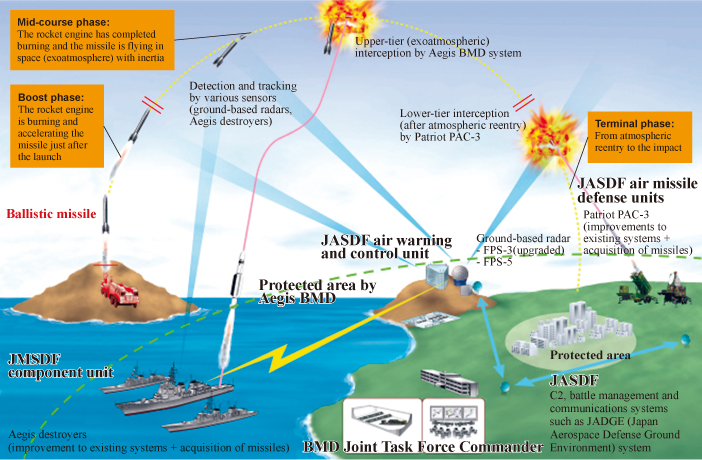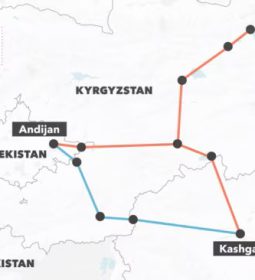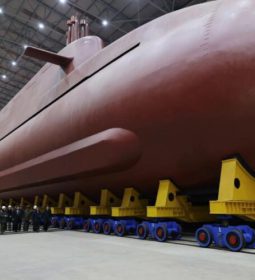Tokyo thinks of a new option: Why Japan just scrapped a $4 billion U.S. missile defense purchase?

Tokyo — A society that prizes harmony, Japanese are known for going to great lengths to avoid saying “no.” But last month Tokyo did just that, stunning Washington as it pulled the plug on a big-ticket U.S weapons purchase, the Aegis Ashore missile defense system.
© Provided by CBS News A U.S. soldier is seen before an inauguration ceremony of the U.S. anti-missile station Aegis Ashore Romania (in the background) at a military base in Deveselu, Romania, May 12, 2016. Aegis Ashore is a land-based capability of the Aegis Ballistic Missile Defense (BMD) System. / Credit: DANIEL MIHAILESCU/AFP/Getty
More than two years into the project, Defense Minister Taro Kono suddenly informed Prime Minister Abe, “I don’t want to go ahead with this,” according to a report in the Asahi Shimbun newspaper.
Using advanced radar and SM3 interceptor missiles, Aegis Ashore was meant to complement the Japan’s seven Aegis destroyers and Patriot PAC-3 surface-to-air missile systems.
The country’s decision to purchase the Aegis Ashore systems dates back to 2017, a year that saw 15 North Korean ballistic missile tests — some over Japanese airspace — as President Donald Trump said that Japan of “free-riding” and threatened to withdraw U.S. troops. (Japan it pays 74% of the costs to base 50,000 U.S. troops in the country.)
To placate the White House, conservative leader Shinzo Abe announced a record $50 billion defense budget for 2019, jets, destroyer upgrades and the two Aegis Ashore systems. Total price tag for Aegis Ashore alone, including maintenance and training: $4 billion plus.
The systems were to be installed in Akita Prefecture, in northern Japan, and Yamaguchi, to the southwest, but almost immediately the project sparked blowback from local communities. Ministry of Defense planners lost credibility when it was revealed the sites were selected using the Google Earth app, based on error-ridden calculations, and that they hadn’t actually visited the candidate locations.
© Provided by CBS News People protest against U.S.-developed Aegis Ashore missile interceptor systems being based in Japan during a demonstration against a visit by President Donald Trump to Japan, May 25, 2019 in Tokyo. / Credit: Carl Court/Getty
Most egregious, as far as local communities were concerned, was the lack of any guarantee that rocket boosters from the SM3 missiles would fall into designated drop areas and not land on residential neighborhoods, absent a fix that would take years to create at much higher cost. Even Prime Minister Abe’s home prefecture of Yamaguchi, where the second system was to be installed, balked.

“We promised the local community we will control where the booster goes down, and we found out we were not able to do that. So we couldn’t move ahead with this Aegis Ashore project,” Kono explained to the Foreign Correspondents Club of Tokyo on June 25.
To some American ears, the rationale seemed thin.
“A chance of booster damage outside an SDF (Self-Defense Forces) base is still a lot better than a North Korean missile striking a Japanese city,” argued James Schoff, senior fellow at the Carnegie Endowment for International Peace, to the Kyodo News service. “So why can’t the Japan side accept a little of that risk?”
But other analysts say the two-and-a-half-year rollout had become irretrievably tainted.
“The entire process was really, really badly handled,” Brad Glosserman, a visiting professor at Tokyo’s Tama University, told CBS News. “It was the botched surveys… the way the Defense Ministry handled outreach to local communities, the usual NIMBYism.”
Glosserman argues that Tokyo “lowballed” the project’s cost to win public support, then drew wrath when the program appeared to incur cost overruns.
Still, a more conventional member of Japan’s ruling Liberal Democratic Party might have pushed through the impasse. The current defense minister is no ordinary politician.
© Provided by CBS News U.S. Secretary of Defense Mark Esper (L) and Japanese Defense Minister Taro Kono speak to the media at the Pentagon, on January 14, 2020 in Arlington, Virginia. / Credit: Mark Wilson/Getty
Taro Kono, 56, is that rarest of Japanese lawmakers; as outspoken and confident in international settings as he is on the floor of the Japanese parliament. Educated at Georgetown University, he is known for taking progressive stands, including opposing nuclear power and easing Japan’s restrictive immigration policy. Within the party and government he has been dubbed a maverick — not necessarily a compliment in a consensus-driven society.
Speaking to CBS News, Stephen Nagy, a professor of international relations at Japan’s International Christian University, recalls an episode several years ago, when Kono was serving as foreign minister. It was a post his own father, Yohei, had held back in the 1990s. “Wang Yi, the foreign minister of China, told him he was nothing like his father… alluding to the fact that his father was much more friendly to China,” Nagy said. Without missing a beat, Kono countered: “You’re not the China my father was dealing with!”
So far, there has been a conspicuous lack of reaction from the White House — not even a single angry tweet. Some analysts speculate that timing figured into Tokyo’s decision to scrap the Aegis Ashore purchase.
Absent a once-in-a-century pandemic and Mr. Trump’s sliding popularity ahead of the November election, “we might not have been able to do this,” political scientist Narushige Michishita told CBS News. “We would have been much more concerned about the possible negative response from the U.S. and Mr. Trump.”
Michishita, of the National Graduate Institute for Policy Studies, believes losing Aegis Ashore will clear the way for an option long-cherished by Japanese conservatives — acquiring a preemptive strike capability, making better use of the 147 F-35 fighters it has on order.
© Provided by CBS News A soldier fires a Type-01 anti-tank missile from a light armored vehicle during the Japan Ground Self-Defense Forces’ annual live fire exercise at the Higashi-Fuji firing range in Gotemba in Shizuoka prefecture, May 23, 2020. / Credit: CHARLY TRIBALLEAU/POOL/AFP/Getty
Japan traditionally has interpreted its post-WWII “peace constitution,” which bans the use of force, as forbidding any preemptive attack. “It’s like being a boxer who doesn’t punch!” said Michishita. But the Liberal Democratic Party has debated the use of preemptive strikes for more than a decade, and with increased regional instability, once-implacable resistance within Japan to the idea of striking enemy bases is starting to waver.
A strike option, Glosserman said, “is something that some of the defense hawks have wanted for a while.” The scrapping of Aegis Ashore “really reanimates that debate.”
Japan’s National Security Council is weighing missile defense options now, and could propose a strike capability as a cheaper, more flexible and effective — as well as constitutional, provided enemy attack is imminent — alternative to Aegis Ashore.
If the hawks prevail, it would validate a view held by the party since 1956, when then-Prime Minister Hatoyama remarked: “I have trouble believing that the constitution means for us to sit and wait to be destroyed.”
- Previous France vs Turkey: Paris suspends role in NATO naval mission after Turkey tensions
- Next Turkey plans to return Hagia Sophia museum in Istanbul mosque status after 80 years: Greeks thinks it should not

















